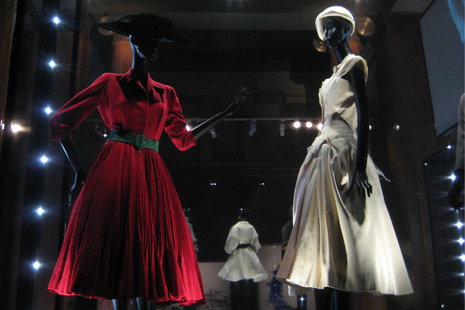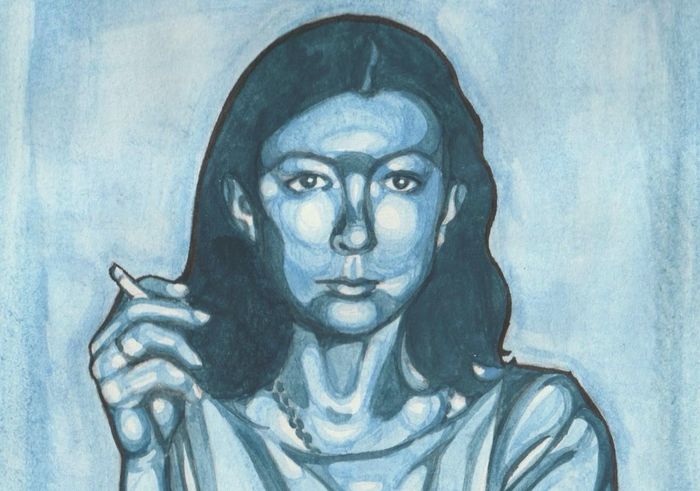Coats are trending, but so is the patriarchy
Irina Echim examines some autumnal trends to unveil what they might say about our perception of femininity

There exists in all of us an ache to believe fashion is apolitical. After all, the ritual of outfit picking that furnishes our mornings is supposed to be a private matter, separate from the increasingly dim world we are preparing to face. For Cambridge students, deciding between a red or a brown blouse might just be the only time of day when they are not forced to think exhaustively about national debt, the fall of the West, the disappearance of intellectualism, and all the other delightful subjects that instill in us an overwhelming wish to never get out of bed again. In spite of our need to preserve fashion as a shiny, frivolous, playful thing which does not require intellectual dissection, fashion is, and has always been, intertwined with social, political and economic tensions. Exploring a few autumn trends, I aim to unveil what our garment preferences reveal about the current (and might I say increasingly deteriorating) state of our cultural perception of femininity, as well as striving to outline some brands that continue to think disruptively about femininity.
“As much as it ‘represents’ the female body, the hourglass shape acts as a constraint – a patriarchal litmus test of feminine beauty”
In an article for Marie Clare, Emma Childs identifies the hourglass-shaped coat as a prevalent outwear piece seen on this year’s runways. The Givenchy Fall/Winter 25-26 features sculpted blazers and wool coats, while Versace spotlights dresses with overdramatized shoulders and hips. Raf Simons and Minuccia Prada, while interrogating ‘typical’ femininity, also adorn their coats with belts that cinch the waist – as does The Row. Dior’s collection lacks sculpted coats, but almost all of its mini-dresses are cinched. Kim Kardashian might have relinquished her BBL four years ago, but our obsession with hourglass bodies remains alive and well. Some view sculpted forms as celebrations of femininity. However, while the female body is indeed more hourglass-like than the male physique, few women would call the shape liberating. I remember with little pleasure that, at the ripe age of 12, I debated whether to buy a waist modelator. As much as it ‘represents’ the female body, the hourglass shape acts as a constraint – a patriarchal litmus test of feminine beauty.
The sculpted coat is basically a fusion between power and polish, a mix of masculinity (the overemphasized shoulders) and femininity (the cinched waist). Designers’ fascination with it seems like an effort to carefully balance old-school ideas of femininity with newer notions of female strength – a kind of diplomatic move through today’s ongoing debates about what it means to be feminine.
“Once again, diplomacy – and perhaps even profit – win out over bold artistic statements, which feel more needed than ever”
The burgeoning minimalist maximalism is another side of the same coin. Catwalks featured pleated skirts, extravagant scarf-coats, ruffled blouses, and plaid jackets – a shift away from last years’ ultra-minimal look. Maximalism celebrates beauty for beauty’s sake, even when it’s not exactly practical, and that’s often linked to femininity. Minimalism, in contrast, tends to get labelled as more masculine because it’s all about function and restraint. This year’s Autumn/Winter collections might have played it safe with colour, but their textures were subversive. Once again, designers seem to craft a type of femininity that appeals to both conservative and progressive buyers. And once again, diplomacy – and perhaps even profit – win out over bold artistic statements, which feel more needed than ever.
Of course, the necessity for this diplomacy is a consequence of high-fashion’s increasing commerciality. As many people have pointed out, the hegemony fast fashion has exerted over the industry prompted luxury brands to adopt new customer-oriented strategies in order to remain relevant. To this remark I might add that the industry’s newfound reliance on replication (fuelled by fast fashion’s production policy and influencer culture) seems to have provoked a certain antipathy toward what Walter Benjamin called “aura” and what we might refer to as artistic authenticity.
That said, I must note that some brands – among which Toteme, Phoebe Philo, Emporio Armani, Alaïa and perhaps even Prada – have been much more refreshingly opinionated in their navigation of femininity. These labels’ Autumn/Winter collections refused to engage with the trending conservatism, portraying femininity, instead, as fluctuant, uninhibited and non-standardised.
 News / Uni Scout and Guide Club affirms trans inclusion 12 December 2025
News / Uni Scout and Guide Club affirms trans inclusion 12 December 2025 News / Cambridge Vet School gets lifeline year to stay accredited28 November 2025
News / Cambridge Vet School gets lifeline year to stay accredited28 November 2025 Science / Did your ex trip on King’s Parade? The science behind the ‘ick’12 December 2025
Science / Did your ex trip on King’s Parade? The science behind the ‘ick’12 December 2025 News / Cambridge study finds students learn better with notes than AI13 December 2025
News / Cambridge study finds students learn better with notes than AI13 December 2025 News / Pembroke to convert listed office building into accom9 December 2025
News / Pembroke to convert listed office building into accom9 December 2025








